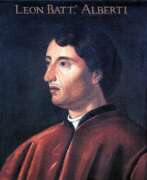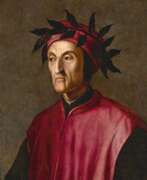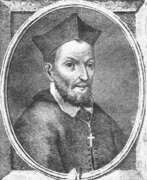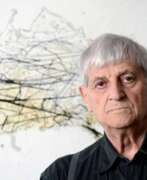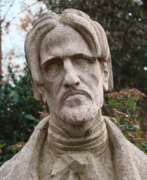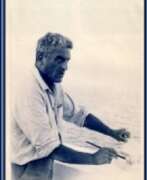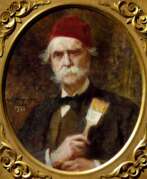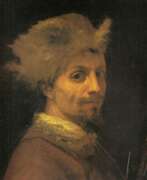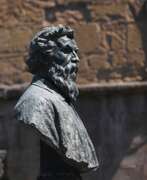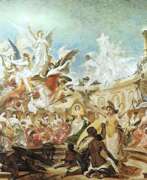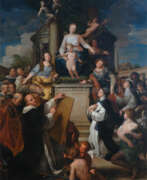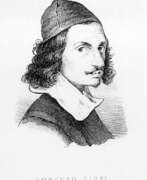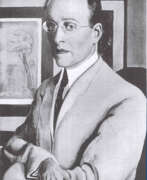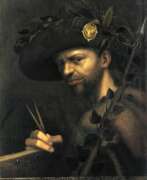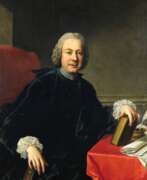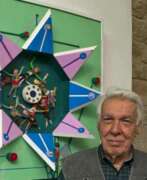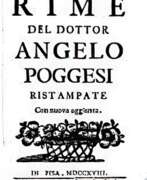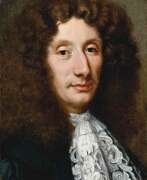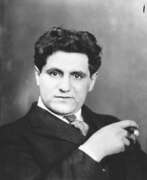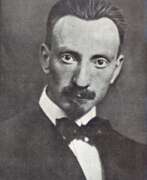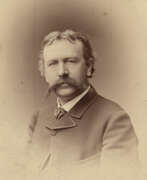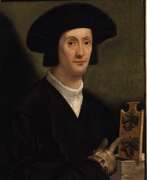Poets Italy
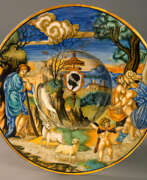

Francesco Xanto Avelli was an Italian ceramicist. He is best known for his painted maiolica works.
Xanto's signed works all date from between 1530 and 1542. Each bears his name and the date of the piece; many also were given ambitious tags explaining their meanings. The surviving pieces appear to be similar in nature, with the exception of the signatures, to most other maiolica ware produced in Urbino at the time. Xanto signed his works with a number of different variants of his own name; besides those with his full name, pieces signed fra Xanto in his hand are known to exist.
Besides being a ceramicist, Xanto was also a poet; in the 1530s he wrote a sequence of sonnets in praise of Francesco Maria I della Rovere, then duke of Urbino. An elegant fair copy survives in the Vatican Library.
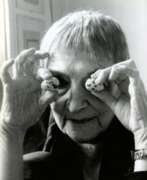

Mirella Bentivoglio is an Italian painter, sculptor and poet, representative of visual concrete poetry.
She was trained as an art historian and artist in Italy, Switzerland and England, and in the 1960s she joined the concrete poetry movement and began to use elements of the alphabet to create expressive images. A few years later, Bentivoglio became increasingly interested in sculpture, turning letters into three-dimensional forms. In many of her later works, two images, a book and an egg, began to recur.


Gastone Biggi was an Italian painter, sculptor, writer, poet, and musicologist.
Biggi combined painting with his activities as an art writer and musicologist. In 1962 his key work The Birth of the Point was published, theorizing the study of the sign module, which he would develop throughout his life. That same year he formed Group 1.
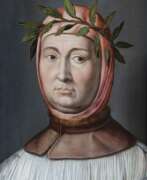

Giovanni Boccaccio was an Italian humanist scholar, writer and poet of the Early Renaissance.
Boccaccio was the son of a Tuscan merchant who sent him to Naples to study business and law. Giovanni revolved in aristocratic circles there and became acquainted with Petrarch's work. In Naples he wrote his first works of poetry, raising the poetry of Italian minstrelsy to literature. Returning to Florence in 1341, Boccaccio, in addition to the famous book of witty short stories "Decameron" (1348-1353), created many poems, allegories and prose works.
In 1350 at Bocaccio's house in Florence, he met Petrarch, which developed into a friendship. In the last years of his life he concentrated on scholarly works in Latin, including writing De montibus, silvis, fontibus, lacubus..., - this alphabetical list of mountains, forests, rivers and lakes was based on the writings of ancient poets. His other Latin works include the philosophical and historical De claris mulieribus (a collection of biographies of famous women, 1360-74) and De casibus virorum illustrium (On the Fates of Famous Men, 1355-74).
Giovanni Boccaccio had a significant influence on the development of all European culture through his work. Together with Petrarch, he laid the foundations of Renaissance humanism and raised popular literature to the level and status of the ancient classics.


Michelangelo di Lodovico Buonarroti Simoni, known simply as Michelangelo, was an Italian sculptor, painter, architect, and poet who played a significant role in the High Renaissance period. Born on March 6, 1475, in Caprese, Italy, Michelangelo's works are a testament to his mastery in various artistic realms, defining him as a quintessential Renaissance man.
Michelangelo's fame began early in his career, most notably with his sculptures "Pietà" (1499) and "David" (1501), both completed before he turned thirty. Despite his self-perception primarily as a sculptor, Michelangelo made an indelible mark in painting, particularly with the frescoes in the Sistine Chapel. These works include the scenes from Genesis on the chapel's ceiling and "The Last Judgment" on its altar wall, showcasing his innovative use of physical realism and psychological tension.
Among his most famous works, the "David" statue, now housed in the Accademia Gallery in Florence, and the "Pietà," located in St. Peter's Basilica, stand out for their intricate detail and emotional depth. Michelangelo's ability to imbue life into marble and his thoughtful consideration of light and shadow in painting were revolutionary. His techniques in fresco painting, such as the buon fresco method used in the Sistine Chapel, where he painted on wet plaster, were groundbreaking for their time.
Despite his temperamental nature, Michelangelo was deeply religious and dedicated to his art, often eschewing the use of assistants. His works were not only recognized and admired in Italy but also attracted attention from abroad, including the Ottoman Empire. Michelangelo's influence extended beyond his lifetime, significantly impacting the development of Mannerism and the Baroque style.
For art collectors and experts, Michelangelo's works remain a pinnacle of artistic achievement. His ability to blend realism with expressive physicality in both sculpture and painting set new standards in art. His works in major museums and galleries worldwide continue to inspire and awe viewers, reflecting the enduring legacy of his genius.
For those interested in the world of art and antiques, staying informed about Michelangelo's works and their influence on modern art is essential. To receive updates on new product sales and auction events related to Michelangelo, sign up for our newsletter. This subscription is an excellent opportunity for enthusiasts and experts alike to stay connected with the ongoing legacy of one of history's greatest artists.
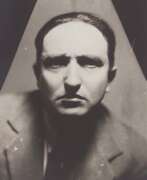

Fortunato Depero was an Italian futurist painter, designer, sculptor and poet. In 1913 Depero comes to Rome, where he meets the futurists Giacomo Balla and Umberto Boccioni.
In the early 1920s, Fortunato Depero tries his hand as an artist in commercial advertising, designs theatrical costumes, works for magazines and as a room decorator, and participates in many art exhibitions.
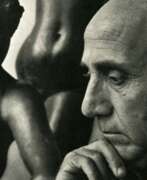

Emilio Greco was an Italian realist sculptor, draftsman, writer and poet.
At the age of 13, Greco was apprenticed to a mason and later studied at the Academy of Fine Arts in Palermo. His first solo exhibition took place in 1946. Emilio Greco created monumental figurative works in bronze and marble, park sculptures, primarily nude female figures and portraits. His sculptures are characterized by refined, elongated forms in the tradition of Italian mannerism. Notable among them is the monument to the character Pinocchio (Pinocchio and the Fairy) for the town of Collodi.
Greco also designed one of the bronze doors of the cathedral in Orvieto and the monument to Pope John XXIII in St. Peter's Basilica. In 1974, a Greco Garden dedicated to his works was opened at the Open Air Museum in Hakone, Japan.
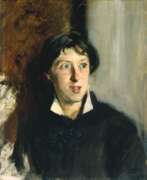

Vernon Lee, real name Violet Paget, was an English writer, translator, and author of numerous essays on art. She is best known for fantasy stories and works on aesthetic theory.
Vernon Lee wrote more than 30 books during her lifetime, including works of various genres: short stories, historical novels, mystical stories. Her art studies, written on a wide range of topics such as Shakespeare, Renaissance culture, etc., are also noted for their excellence. No less popular were her numerous travel notes on her journeys in Europe - Germany, France, Switzerland.
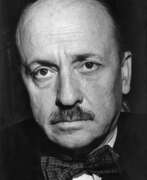

Filippo Tommaso Marinetti was an Italian writer, poet, founder of Futurism and one of the ideologues of Fascism. He founded a number of futurist magazines and the publishing house Poesia.
Filippo Tommaso Marinetti - author of the first futurist manifesto, one of the founders of aerial painting. He founded his own political party in 1918 to expand and translate the ideals of the futurist movement into the political struggle.
One of the founders of Italian Fascism, he worked closely with Mussolini. In his later work, he developed an updated version of futurism, the so-called Aeropoiesis, whose manifesto he published in 1931.
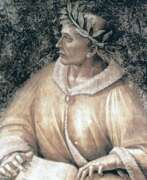

Publius Ovidius Naso, known as Ovidius (Ovid), was an ancient Roman poet who lived during the reign of Emperor Augustus.
Most of the information about the life and work of Ovid, scholars have drawn from his own works, as well as from the works of Seneca the Elder and Marcus Fabius Quintilianus. Ovid was from a fairly high class of "horsemen", studied rhetoric at the maestros of oratory of the ancient Roman Empire, and then went traveling, visiting Athens, Asia Minor and Sicily. As a young man, Ovid held minor public offices, was a member of the college of civil affairs, and served in an office that performed spiritual and secular duties at the state level.
However, Ovid was much more attracted to poetry, and he resigned and about 29-25 BC joined the circle of those chosen under the patronage of Marcus Valerius Messala Corvinus. After publishing Amores, a collection of love-erotic lyrics, around 15-16 BC, Ovid became one of Rome's most popular poets. He became famous for his works in the genre of elegy, as well as for his epic poem Metamorphoses (8 AD), which became one of the most important sources in the study of classical mythology.
For reasons unknown to us, in 8 A.D. Ovid was disgraced and exiled for the rest of his life to Tomes on the Black Sea, where he wrote his "Mournful Elegies" and a poem cycle entitled "Letters from Pontus". A contemporary of Virgil and Horace, Ovid was one of the three canonical representatives of Latin literature.


Francesco Petrarca was an Italian poet, the founder of European humanism, and one of the greatest figures of the Italian Proto-Renaissance.
Petrarca studied at the University of Montpellier, then at the University of Bologna, in 1330 entered the service of Cardinal Giovanni Colonna as a chaplain. Then he made various pilgrimages, in 1353 settled in Milan at the court of Archbishop Giovanni Visconti, and carried out important diplomatic missions. Petrarca spent the last years of his life in the village of Arquà near Padua.
Since 1337 Petrarca began to write literary works: these were historical poems in Latin and lyric poems in Italian. In 1327 Francesco saw Laura for the first time, undivided love for which was the main source of his poetry. Laura was for him an object of adoration and pure platonic love. Despite the fact that they saw each other only a few times and were not really acquainted, Petrarca carried this feeling through his life.
Passionate about ancient culture, Petrarch deciphered and commented on the manuscripts of Cicero, Quintilian and others. He opposed medieval scholasticism interest in the earthly purpose of man, argued that the nobility of man depends not on the nobility of origin, but on his virtue. Petrarca highly valued the mind and creative abilities of man, and these humanistic ideas found vivid expression in his lyrics, revealing the inner world of man. Petrarca's work laid the foundation for the formation of Italian humanism. He also dreamed of the unification of Italy, the revival of the former greatness of Rome.
Francesco Petrarca had one of the richest libraries of his time, where ancient Roman writers, poets, historians, philosophers were represented. He was one of the brightest representatives of the culture of the Renaissance. Petrarca's works are characterized by perfection of form and musicality of verse, which played a significant role in the development of European poetry. Among his works are the poem "Africa" about the Second Punic War in Latin, allegorical pastoral eclogues "Bucolics" (1346/1357), a book of songs "My Italy", "Noble Spirit", sonnets, etc.


Luigi Pulci was an Italian poet and humanist writer and diplomat.
For many years Pulci lived under the patronage of the Medici family and was a member of their circle of poets and artists, and later, after Lorenzo the Magnificent came to power, entrusted him with various embassies and diplomatic missions. At the age of about 40, Pulci entered the service of the northern condottiere Roberto Sanseverino and remained with him until his death.
Pulci wrote many different works, but is known primarily as the author of one of the outstanding epics of the Renaissance, the Morgante (Morgante or Morgante Maggiore). This chivalric-romantic parody and comic epic was first published in Italian in 1481. Its plot is based on the adventures of the knight Orlando and his squire, the giant Morgante. Pulci's unpretentious narrative and sharp satire immediately made "Morgante" very popular, but also aroused the anger of influential enemies like the Dominican friar Girolamo Savonarola, who called to burn copies of the book on the "bonfires of vanity".
Pulci's work influenced the French satirical writer François Rabelais (1494-1553).
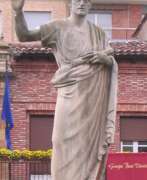

Marcus Fabius Quintilianus was a Roman educator and rhetorician born in Hispania, widely referred to in medieval schools of rhetoric and in Renaissance writing. In English translation, he is usually referred to as Quintilian, although the alternate spellings of Quintillian and Quinctilian are occasionally seen, the latter in older texts.


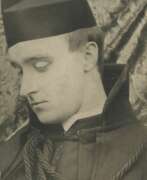

Frederick William Rolfe (1860–1913), also known by his self-bestowed title "Baron Corvo," was an English writer, artist, and photographer whose life and work were marked by eccentricity and a persistent quest for recognition. Born on July 22, 1860, in Cheapside, London, Rolfe was the son of a piano maker. He left formal education at fourteen to pursue a career in teaching, holding a brief tenure at The King's School in Grantham.
In 1886, Rolfe converted to Roman Catholicism, a decision that profoundly influenced his personal and professional life. Aspiring to the priesthood, he enrolled at St. Mary's College, Oscott, in 1887 and later at the Scots College in Rome. However, his unconventional behavior and apparent lack of commitment led to his dismissal from both institutions, leaving him embittered and with an unfulfilled clerical ambition.
Following these setbacks, Rolfe turned to writing and art. His literary debut, "Stories Toto Told Me" (1898), is a collection of tales reflecting his fascination with Italian culture and Catholicism. This work was followed by "In His Own Image" (1901) and "Chronicles of the House of Borgia" (1901), showcasing his diverse interests and narrative skill.
Rolfe's most acclaimed novel, "Hadrian the Seventh" (1904), is a semi-autobiographical fantasy in which an Englishman, much like Rolfe himself, is unexpectedly elected Pope. The novel delves into themes of unfulfilled potential and personal vindication, mirroring Rolfe's own experiences with the Catholic Church.
Despite his creative output, Rolfe struggled with financial instability and strained relationships. His patronage from Caroline Shirley, Duchess Sforza Cesarini, provided some support, but his often abrasive personality led to conflicts, notably with Father Charles Sidney Beauclerk during his time in Holywell. These disputes further isolated him from potential allies and patrons.
In addition to writing, Rolfe was an accomplished photographer and painter, though these pursuits did not bring him significant financial success. His later years were spent in Venice, a city that inspired his posthumously published work, "The Desire and Pursuit of the Whole" (1934). Rolfe died there on October 25, 1913, at the age of 53.
Rolfe's life and career were characterized by a complex interplay of talent, ambition, and personal idiosyncrasies. His contributions to literature, particularly through "Hadrian the Seventh," have secured him a place in English literary history, while his tumultuous relationships and self-styled nobility continue to intrigue scholars and readers alike.
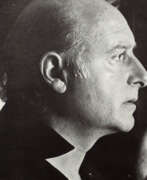

Domenico (Mimmo) Rotella was an Italian artist considered an important figure in post-war European art. Best known for his works of décollage and psychogeographics, made from torn advertising posters. He was associated to the Ultra-Lettrists an offshoot of Lettrism and later was a member of the Nouveau Réalisme, founded in 1960 by the art critic Pierre Restany.
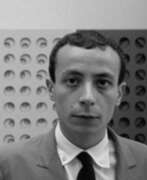

Paolo Scheggi is an Italian constructivist artist, designer and architect.
Scheggi was educated in Florence at the Academy of Fine Arts, initially studying Art Informel and New Dadaism techniques, but quickly developed his own style. He worked with Lucio Fontana and joined the New Trends movement in 1965.
Scheggi became best known for his layered monochromatic works. He was involved in journalism and poetry and worked on architectural urban projects. Scheggi also designed a new Milan fashion house for the famous designer Germana Marucelli.


Toti (Antonio) Shaloya is an Italian artist and poet. After a period of expressionism, he moved to an abstract-concrete pictorial language with a strong material charge. A significant part of his activity is devoted to the theater, for which he collaborated with avant-garde writers, musicians, directors and choreographers. Since 1961, he began an independent poetic activity, partly dedicated to children, creating nonsense and limericks and illustrating his own poems. He was a teacher and director of the Academy of Fine Arts in Rome.
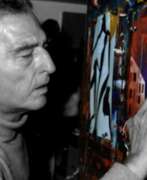

Emilio Tadini is an Italian artist, writer and poet, playwright, translator and journalist.
After graduating from the Faculty of Literature at the Catholic University of the Sacred Heart in Milan, Tadini published essays, novels, poems. At the same time, he also dabbles in painting. Tadini was also president of the Brera Academy of Fine Arts from 1997 to 2000.
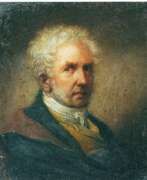

Salvatore Tonci was an Italian painter, musician, singer, and poet, renowned for his multifaceted artistic talents and his life largely spent in Russia. Born in January 1756 in Rome, Tonci moved to Russia in 1797, where he significantly contributed to the cultural scenes of St. Petersburg and Moscow until his death in December 1844. He was instrumental in the founding of the Architectural School in Moscow and is celebrated for his portrait paintings, which capture prominent figures of his time in a style that combines Italian finesse with Russian sensibilities.
Throughout his career, Tonci produced a series of notable works, including portraits of Russian Emperor Paul I and the poet Gavrila Derzhavin. His work is characterized by its historical depth and artistic mastery, reflecting the social and political landscapes of 18th and 19th century Russia. His contributions were not limited to painting; he also engaged in poetry and played a vital role in the artistic community as an educator, supervising drawing classes at the Moscow School of Painting, Sculpture and Architecture for over two decades.
For those interested in exploring the works of Salvatore Tonci or learning more about his contributions to art and culture, his paintings and other artistic expressions provide a fascinating glimpse into the rich cultural interchange between Italy and Russia during his lifetime. To stay updated on new discoveries and auction events related to Salvatore Tonci, you can sign up for updates, ensuring you don't miss out on any valuable insights or opportunities related to this remarkable artist.
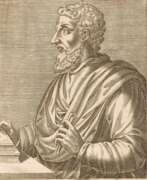

Marcus Terentius Varrō, sometimes called Varro of Reatinus, was an ancient Roman scholar-encyclopedist and writer.
Varro was a very prolific writer: the titles of his 74 works are known, totaling 620 books. Varron was engaged in logic, language, poetry, history, law and geography, history, art, history of literature, theory of music. Judging by the surviving accounts of his contemporaries, the most significant of Varron's lost works were "Divine and Human Antiquities" (Antiquitates rerum humanarum et divinarum) in 41 books and "Portraits" (Imagines) in 15 books, which contained biographies of famous Greeks and Romans, as well as 700 portraits that illustrated the text. The treatise "On Agriculture" (De re rustica) in three books has survived in complete preservation.
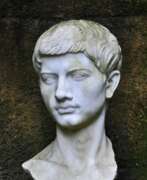

Publius Vergilius Maro, usually called Virgil or Vergil, was an ancient Roman poet of the Augustan period. He composed three of the most famous poems in Latin literature: the Eclogues (or Bucolics), the Georgics, and the epic Aeneid. A number of minor poems, collected in the Appendix Vergiliana, were attributed to him in ancient times, but modern scholars consider his authorship of these poems as dubious.
Virgil's work has had wide and deep influence on Western literature, most notably Dante's Divine Comedy, in which Virgil appears as the author's guide through Hell and Purgatory.
Virgil has been traditionally ranked as one of Rome's greatest poets. His Aeneid is also considered a national epic of ancient Rome, a title held since composition.
